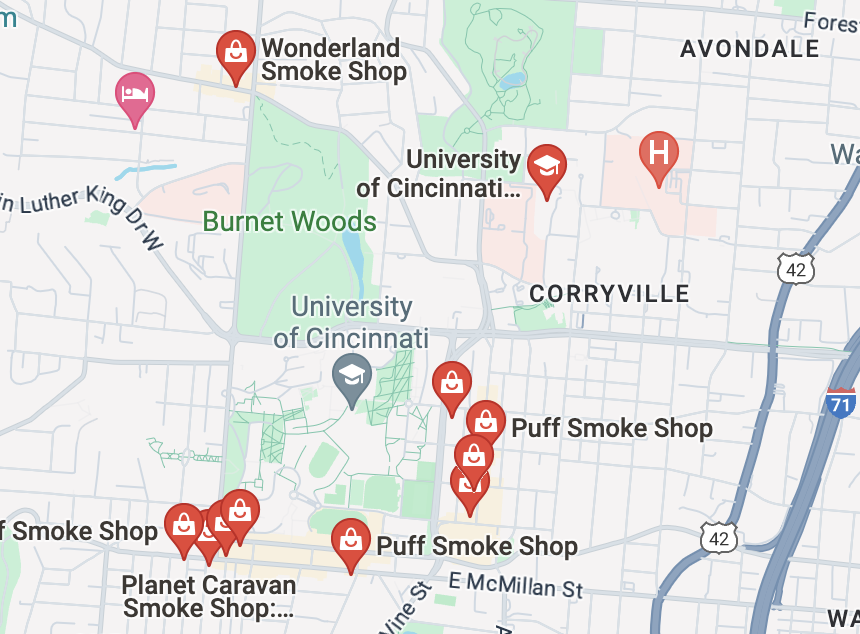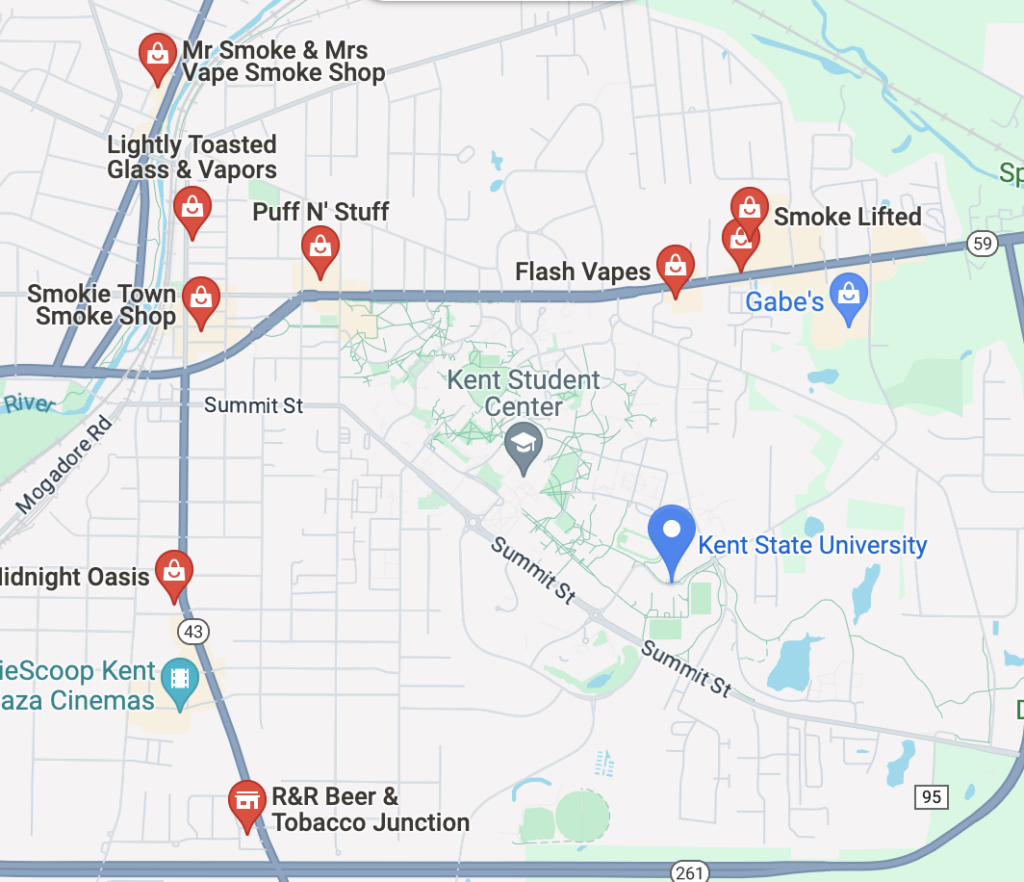
The Growing Trend Of Smoking
Smoking is very prevalent among adolescents and college students and with the ways shops have rebranded their advertising, they seem to become the target audience.
This has become a topic of conversation for Ohio lawmakers in January of this year after state lawmakers overturned Governor Mike DeWine’s veto of a bill that would stop retailers from selling flavored tobacco products. According to DeWine the sale of flavored tobacco and teens smoking and vaping is a “public health crisis” in Ohio. This process led to the state overruling and getting rid of cities’ ability to regulate tobacco sales.
According to a study done in 2015 by Hongying Dai, a doctor at Children’s Mercy Hospital in Kansas City Missouri “among 2,755 colleges included 66.5% had at least one vape shop within a 3-mile radius. The median proximity of the nearest vape shop to each college/university was 1.8 miles.” Part of this is due to the shift in advertising vape shops have invested in.
Flash Vapes which has a location approximately less than 1 mile away has started a promotion where Kent State students receive 10% of their purchases. Kevin Bottomley a worker at this Flash Vapes open since 2018 says, “I would estimate about 90% of our customers are college students.” Kent State is not the only university with tobacco shops nearby, the University of Akron has multiple retailers within a mile of the university as well as the University of Cincinnati.
Kevin Bottomley
“I would estimate about 90% of our customers are college students.”
On the other hand, colleges with campus housing had a lower density of vape shops than those without campus housing, and colleges located in cities had a much higher density of vape shops than those located in rural areas. Smoke-free and e-cigarette-free campus policies have had significant effects in reducing the density of vape shops but have not reduced the proximity of vape shops to colleges.
Advertising seems to be the biggest factor in these statistics. The more advertising targeted at young people that exists influences youth to be more drawn to tobacco. According to an article made in 2020, the use of TV advertising has been a priority in the last six years. Between 2018 and 2019, JUUL, the most popular e-cigarette brand in North America spent US $57 million on TV advertisements to promote their products. JUUL claims that these advertisements are to make a healthy alternative to smoking available but “many public health advocates are concerned these advertisements may also attract youth, and research confirms that these advertisements increase exposure to their products, which subsequently increases the likelihood of use by youth.”
The use of products that contain nicotine can have a severe detrimental effect on someone’s mental health. Vaping is usually a way to deal with stress or anxiety and using nicotine to heal this can turn into a cycle of nicotine dependence which can lead to addiction. Using nicotine for adolescents can cause more negative effects as the CDC states, “they can harm the parts of the brain that control attention, learning, mood, and impulse control.” In 2023 the high school smoking rate in America was 3.3% which is a low percentage but the same survey done by the campaign for tobacco-free kids says that 20% of high school students use e-cigarettes and this number is a lot more glaring.
At Indiana University-Purdue University Indianapolis, students can meet with a quit coach to cut out nicotine and those who meet with the coach can receive free nicotine-replacement therapy. The University of Oregon provides a similar coaching program and studies back up this plan. A 2014 study shows coaching to a “point prevalence quit rate was 88.7 as it was the most significant and enduring effect.” (Gary A. Sforzo)
These colleges have attempted to address the problem, and some have been more effective than others. The one thing these universities do not have is the power to influence the retailers that build around them and the advertisements that come across the screens of students who attend their schools.



